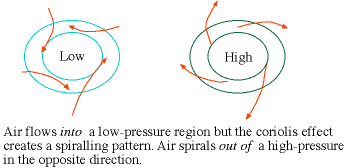LongRoadBob
Cleared for Takeoff
I actually just now heard all of you with your collective groans. Cut it out!
This is the "pilot training" sub forum, so...you know, just move on, right?
I have it from a few sources here in Norway that have experience pilot training in the USA, that though our curriculum is a good deal harder in theory, the USA is a good deal better trained in stick and rudder flying. Personally I'd feel better if ours was more like yours, but I am stuck with having to pass the exam here and they possibly expect more theory. I don't know, exam questions from the US folk have posted here seem pretty hard to me, but whenever I ask a question here about some of the aspects we have to know, I notice replies of "why would you have to know that?" And "WTF?"
Anyway, I have been going through the meteorology section which I failed in my first exam. I passed (pretty good marks too if I do say so myself) everything except air law, meteorology, and navigation.
The Corialis effect is only ever shown as far as I can see within the northern hemisphere, and with a high pressure area at a lower latitude, moving because of pressure gradient towards a low pressure area at a higher latitude. It's tricky, being an apparent force and not an "actual" force, but I'm trying to figure out what happens when there is a high pressure more north than a low pressure, but still in the northern hemisphere?
My thinking right now is the "effect" is very much reduced, since it the pressure gradient force is moving south from a position that laterally is not changing as much, but realize I could be totally wrong.
Anyone have an answer? Anyone want to shoot me?
This is the "pilot training" sub forum, so...you know, just move on, right?
I have it from a few sources here in Norway that have experience pilot training in the USA, that though our curriculum is a good deal harder in theory, the USA is a good deal better trained in stick and rudder flying. Personally I'd feel better if ours was more like yours, but I am stuck with having to pass the exam here and they possibly expect more theory. I don't know, exam questions from the US folk have posted here seem pretty hard to me, but whenever I ask a question here about some of the aspects we have to know, I notice replies of "why would you have to know that?" And "WTF?"
Anyway, I have been going through the meteorology section which I failed in my first exam. I passed (pretty good marks too if I do say so myself) everything except air law, meteorology, and navigation.
The Corialis effect is only ever shown as far as I can see within the northern hemisphere, and with a high pressure area at a lower latitude, moving because of pressure gradient towards a low pressure area at a higher latitude. It's tricky, being an apparent force and not an "actual" force, but I'm trying to figure out what happens when there is a high pressure more north than a low pressure, but still in the northern hemisphere?
My thinking right now is the "effect" is very much reduced, since it the pressure gradient force is moving south from a position that laterally is not changing as much, but realize I could be totally wrong.
Anyone have an answer? Anyone want to shoot me?

